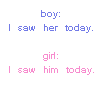
ရုိးရုိးေလး ေလ႔လာ/ဖတ္ရႈထားတဲ႔ ဗုဒၶဘာသာအေၾကာင္း Q+A စာတမ္းေလးပါ။
What is Buddhism?
The name Buddhism comes from the word 'budhi' which means 'to wake up' and thus Buddhism is the philosophy of awakening. This philosophy has its origins in the experience of the man Siddhartha Gotama, known as the Buddha, who was himself awakened at the age of 35. Buddhism is now 2,500 years old and has about 300 million followers worldwide. Until a hundred years ago Buddhism was mainly an Asian philosophy but increasingly it is gaining adherents in Europe, Australia and America.
So Buddhism is just a philosophy?
The word "philosophy" comes from two words 'philo' which means 'love' and 'sophia' which means 'wisdom'. So philosophy is the love of wisdom or love and wisdom, both meanings describe Buddhism perfectly. Buddhism teaches that we should try to develop our intellectual capacity to the fullest so that we can understand clearly. It also teaches us to develop love and kindness so that we can be like a true friend to all beings. So Buddhism is a philosophy but not just a philosophy. It is the supreme philosophy.
Who was the Buddha?
In the year 563 B.C. a baby was born into a royal family in northern India. He grew up in wealth and luxury but eventually found that worldly comforts and security do not guarantee happiness. He was deeply moved by the suffering he saw all around and resolved to find the key to human happiness. When he was 29 he left his wife and child and set off to sit at the feet of the great religious teachers of the day to learn from them. They taught him much but none really knew the cause of human suffering and how it could be overcome. Eventually, after six years study and meditation he had an experience in which all ignorance fell away and he suddenly understood.
From that day onwards, he was called the Buddha, the Awakened One. He lived for another 45 years in which time he travelled all over the northern India teaching others what he had discovered. His compassion and patience were legendary and he had thousands of followers. In his eightieth year, old and sick, but still happy and at peace, he finally died.
Wasn't it irresponsible for the Buddha to walk out on his wife and child?
It couldn't have been an easy thing for the Buddha to leave his family. He must have worried and hesitated for a long time before he finally left. But he had a choice, dedicating himself to his family or dedicating himself to the whole world. In the end, his great compassion made him give himself to the whole world. And the whole world still benefits from his sacrifice. This was not irresponsible. It was perhaps the most significant sacrifice ever made.
The Buddha is dead so how can he help us?
Faraday, who discovered electricity, is dead, but what he discovered still helps us. Louis Pasteur who discovered the cures for so many diseases is dead, but his medical discoveries still save lives. Leonardo da Vinci who created masterpieces of art is dead, but what he created can still uplift and give joy. Noble men and heroes may have been dead for centuries but when we read of their deeds and achievements, we can still be inspired to act as they did. Yes, the Buddha is dead but 2,500 years later his teachings still help people, his example still inspires people, his words still change lives. Only a Buddha could have such power centuries after his death.
Was the Buddha a god?
No, he was not. He did not claim that he was a god, the child of a god or even the messenger from a god. He was a man who perfected himself and taught that if we follow his example, we could perfect ourselves also.
If the Buddha is not a god, then why do people worship him?
There are different types of worship. When someone worships a god, they praise him or her, making offerings and ask for favours, believing that the god will hear their praise, receive their offerings and answer their prayers. Buddhists do not indulge in this kind of worship. The other kind of worship is when we show respect to someone or something we admire. When a teacher walks into a room we stand up, when we meet a dignitary we shake hands,when the national anthem is played we salute. These are all gestures of respect and worship and indicate our admiration for persons and things. This is the type of worship Buddhist practise. A statue of the Buddha with its hands rested gently in its lap and its compassionate smile reminds us to strive to develop peace and love within ourselves. The perfume of incense reminds us of the pervading influence of virtue, the lamp reminds us of light of knowledge and the flowers which soon fade and die, reminds us of impermanence. When we bow, we express our gratitude to the Buddha for what his teachings have given us. This is the nature of Buddhist worship.
But I have heard people say that Buddhists worship idols.
Such statements only reflect the misunderstanding of the persons who make them. The dictionary defines an idol as "an image or statue worshipped as a god". As we have seen, Buddhist do not believe that the Buddha was a god, so how could they possibly believe that a piece of wood or metal is a god? All religions use symbols to express various concepts. In Taoism, the ying-yang is used to symbolise the harmony between opposites. In Sikhism, the sword is used to symbolise spiritual struggle. In Christianity, the fish is used to symbolise his sacrifice. And in Buddhism, the statue of the Buddha also reminds us of the human dimension in Buddhist teaching, the fact that Buddhism is man-centred, not god-centred, that we must look within not without to find perfection and understanding. So to say that Buddhist worship idols is not correct.
Why do people burn paper money and do all kinds of strange things in Buddhist temples?
Many things seem strange to us when we don't understand them. Rather than dismiss such things as strange, we should strive to find their meaning. However, it is true that Buddhist practice sometimes has its origin in popular superstition and misunderstanding rather than the teaching of the Buddha. And such misunderstandings are not found in Buddhism alone, but arise in all religions from time to time. The Buddha taught with clarity and in detail and if some fail to understand fully, the Buddha cannot be blamed.
There is a saying:
If a man suffering from a disease does not seek treatment even when there is a physician at hand, it is not the fault of the physician. In the same way, if a man is oppressed and tormented by the disease of defilements but does not seek the help of the Buddha, that is not the Buddha's fault. -- JN 28-9
Nor should Buddhism or any religion be judged by those who don't practise it properly. If you wish to know the true teachings of Buddhism, read the Buddha's words or speak to those who understand them properly.
If Buddhism is so good why are some Buddhist countries poor?
If by poor you mean economically poor, then it is true that some Buddhist countries are poor. But if by poor you mean a poor quality of life, then perhaps some Buddhist countries are quite rich. America, for example, is an economically rich and powerful country but the crime rate is one of the highest in the world, millions of old people are neglected by their children and die of loneliness in old people's homes, domestic violence and child abuse are major problems. One in three marriages end in divorce, pornography is easily available. Rich in terms of money but perhaps poor in terms of the quality of life. Now if you look at some traditional Buddhist countries you find a very different situation. Parents are honoured and respected by their children, the crime rates are relatively low, divorce and suicide are rare and traditional values like gentleness, generosity, hospitality to strangers, tolerance and respect for others are still strong. Economically backward, but perhaps a higher quality of life than a country like America. But even if we judge Buddhist countries in terms of economics alone, one of the wealthiest and most economically dynamic countries in the world today is Japan where 93% of the population call themselves Buddhist.
Why is it that you don't often hear of charitable work being done by Buddhists?
Perhaps it is because Buddhists don't feel the need to boast about the good they do. Several years ago the Japanese Buddhist leader Nikkho Nirwano received the Templeton Prize for his work in promoting inter-religious harmony. Likewise a Thai Buddhist monk was recently awarded the prestigious Magsaysay Prize for his excellent work among drug addicts. In 1987 another Thai monk, Ven.Kantayapiwat was awarded the Norwegian Children's Peace Prize for his many years work helping homeless children in rural areas. And what about the large scale social work being done among the poor in India by the Western Buddhist Order? They have built schools, child minding-centres, dispensaries and small scale industries for self-sufficiency. Buddhist see help given to others as an expression of their religious practice just as other religions do but they believe that it should be done quietly and without self-promotion. Thus you don't hear so much about their charitable work.
Why are there so many different types of Buddhism?
There are many different types of sugar: brown sugar, white sugar, rock sugar, syrup and icing sugar but it is all sugar and it all tastes sweet. It is produced in different forms so that it can be used in different ways. Buddhism is the same: there is Theravada Buddhism, Zen Buddhism, Pure Land Buddhism, Yogacara Buddhism and Vajrayana Buddhism but it is all Buddhism and it all has the same taste - the taste of freedom. Buddhism has evolved into different forms so that it can be relevant to the different cultures in which it exists. It has been reinterpreted over the centuries so that it can remain relevant to each new generation. Outwardly, the types of Buddhism may seem very different but at the centre of all of them is the Four Noble Truths and the Eightfold Path. All major religions, Buddhism included, have split into schools and sects. But the different sects of Buddhism have never gone to war with each other and to this day, they go to each other's temples and worship together. Such tolerance and understanding is certainly rare.
You certainly think highly of Buddhism. I suppose you think your religion is right and all the others are wrong.
No Buddhist who understands the Buddha's teaching thinks that other religions are wrong. No one who, has made a genuine effort to examine other religions with an open mind could think like that either. The first thing you notice when you study the different religions is just' how much they have in common. All religions acknowledge that man's present state is unsatisfactory. All believe that a change of attitude and behaviours is needed if man's situation is to improve. All teach an ethics that includes love, kindness, patience, generosity and social responsibility and all accept the existence of some form of Absolute. They use different languages, different names and different symbols to describe and explain these things; and it is only when they narrow-mindedly cling to their one way of seeing things that religious intolerance, pride and self-righteousness arise.
Imagine an Englishman, a Frenchman, a Chinese and an Indonesian all looking at a cup. The Englishman says, "That's a cup". The Frenchman answers, "No it's not. It's a tasse". The Chinese comments, You're both wrong. It's a pei". And the Indonesian laughs at the others and says "What fools you are. It's a cawan." The Englishman gets a dictionary and shows it to the others saying, "I can prove that it is a cup. My dictionary says so". "Then your dictionary is wrong", says the French man "because my dictionary clearly says it is a tasse". The Chinese scoffs at them. "My dictionary is thousands of years older than yours, so my dictionary must be right. And besides, more people speak Chinese than any other language, so it must be a pei". While they are squabbling and arguing with each other, a Buddhist comes up and drinks from the cup. After he has drunk, he says to the others, "Whether you call it a cup, a tasse, a pei or a cawan, the purpose of the cup is to be used. Stop arguing and drink, stop squabbling and refresh your thirst". This is the Buddhist attitude to other religions.
Is Buddhism scientific?
Before we answer that question it would be best to define the word 'science'. Science, according to the dictionary is: "knowledge which can be made into a system, which depends upon seeing and testing facts and stating general natural laws, a branch of such knowledge, anything that can be studied exactly". There are aspects of Buddhism that would not fit into this definition but the central teachings of Buddhism, the Four Noble Truths, most certainly would. Suffering, the First Noble Truth, is an experience that can be defined, experienced and measured. The Second Noble Truth states that suffering has a natural cause, craving,which likewise can be defined, experienced and measured. No attempted is made to explain suffering in terms of a metaphysical concept or myths. Suffering is ended, according to the Third Noble Truth, not by relying on upon a supreme being, by faith or by prayers but simply by removing its cause. This is axiomatic. The Fourth Noble Truth, the way to end suffering, once again, has nothing to do with metaphysics but depends on behaving in specific ways. And once again behaviour is open to testing. Buddhism dispenses with the concept of a supreme being, as does science, and explains the origins and workings of the universe in terms of natural law. All of this certainly exhibits a scientific spirit. Once again, the Buddha's constant advice that we should not blindly believe but rather question, examine, inquire and rely on our own experience, has a definite scientific ring to it. He says:
"Do not go by revelation or tradition,do not go by rumour, or the sacred scriptures, do not go by hearsay or mere logic, do not go by bias towards a notion or by another person's seeming ability and do not go by the idea 'He is our teacher'. But when you yourself know that a thing is good, that it is not blameble, that it is praised by the wise and when practised and observed that it leads to happiness, then follow that thing."
So we could say that although Buddhism in not entirely scientific, it certainly has a strong overtone and is certainly more scientific than any other religion. It is significant that Albert Einstein, the greatest scientist of the twentieth century said of Buddhism:
"The religion of the future will be a cosmic religion. It should transcend a personal God and avoid dogmas and theology. Covering both natural and spiritual, it should be based on a religious sense arising from the experience of all things, natural and spiritual and a meaningful unity. Buddhism answers this description. If there is any religion that would cope with modern scientific needs, it would be Buddhism."














 သားေလး! သူမ်ားhappy birthdayဆုိတုိင္း သားေလးေပ်ာ္နိဳင္ပါ႔မလား? သားေလးကလည္း ေပ်ာ္စရာနဲ႔ေတြ႕ရင္ေပ်ာ္လုိက္ၾက၊ ေဆြးစရာနဲ႔ေတြ႕ရင္ လြမ္းေဆြးလုိက္ၾကတဲ႔ ေလာကၾကီးအတြင္းမွာ ေနၾကရတဲ႔ လူသားထဲက လူသားတစ္ေယာက္ပဲဆုိေတာ႔ အေမ႔သားျဖတ္သန္းခဲ႔တဲ႔ အသက္အပုိင္းျခားအတြင္းမွာ ေပ်ာ္စရာအျဖစ္ရရွိခဲ႔တဲ႔ အခ်ိန္ကုိ ေရတြက္လုိ႔ရနိဳင္ပါလိမ္႔မယ္။ ဒါေပမယ္႔ အဆင္မေျပ၊ ျငီးေငြ႕စရာ၊ အလုိမက်စရာအခ်ိန္ေတြကေတာ႔ ေရတြက္လုိ႔ရမယ္မထင္ပါဘူး သားရယ္၊ ဒါေပမယ္႔ အဲဒီအခက္အခဲေတြၾကားကေန..ရသင္႔တဲ႔ဘ၀အႏွစ္သာရတစ္ခုကုိေတာ႔ ရယူသင္႔ပါတယ္ သား။ ဒါမွ သားလူျဖစ္လာရက်ဳိး, ေမေမေမြးရက်ဳိးနပ္မွာေပါ႔ သားေလး...
သားေလး! သူမ်ားhappy birthdayဆုိတုိင္း သားေလးေပ်ာ္နိဳင္ပါ႔မလား? သားေလးကလည္း ေပ်ာ္စရာနဲ႔ေတြ႕ရင္ေပ်ာ္လုိက္ၾက၊ ေဆြးစရာနဲ႔ေတြ႕ရင္ လြမ္းေဆြးလုိက္ၾကတဲ႔ ေလာကၾကီးအတြင္းမွာ ေနၾကရတဲ႔ လူသားထဲက လူသားတစ္ေယာက္ပဲဆုိေတာ႔ အေမ႔သားျဖတ္သန္းခဲ႔တဲ႔ အသက္အပုိင္းျခားအတြင္းမွာ ေပ်ာ္စရာအျဖစ္ရရွိခဲ႔တဲ႔ အခ်ိန္ကုိ ေရတြက္လုိ႔ရနိဳင္ပါလိမ္႔မယ္။ ဒါေပမယ္႔ အဆင္မေျပ၊ ျငီးေငြ႕စရာ၊ အလုိမက်စရာအခ်ိန္ေတြကေတာ႔ ေရတြက္လုိ႔ရမယ္မထင္ပါဘူး သားရယ္၊ ဒါေပမယ္႔ အဲဒီအခက္အခဲေတြၾကားကေန..ရသင္႔တဲ႔ဘ၀အႏွစ္သာရတစ္ခုကုိေတာ႔ ရယူသင္႔ပါတယ္ သား။ ဒါမွ သားလူျဖစ္လာရက်ဳိး, ေမေမေမြးရက်ဳိးနပ္မွာေပါ႔ သားေလး... 












